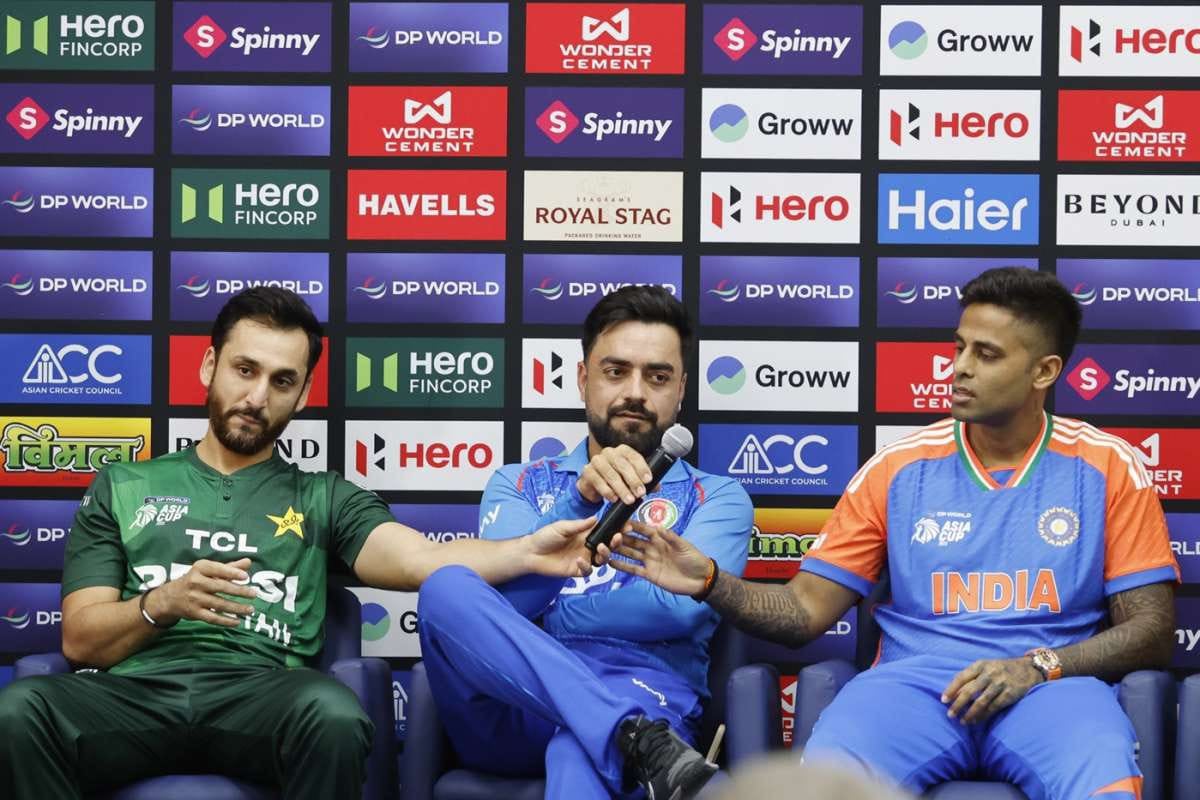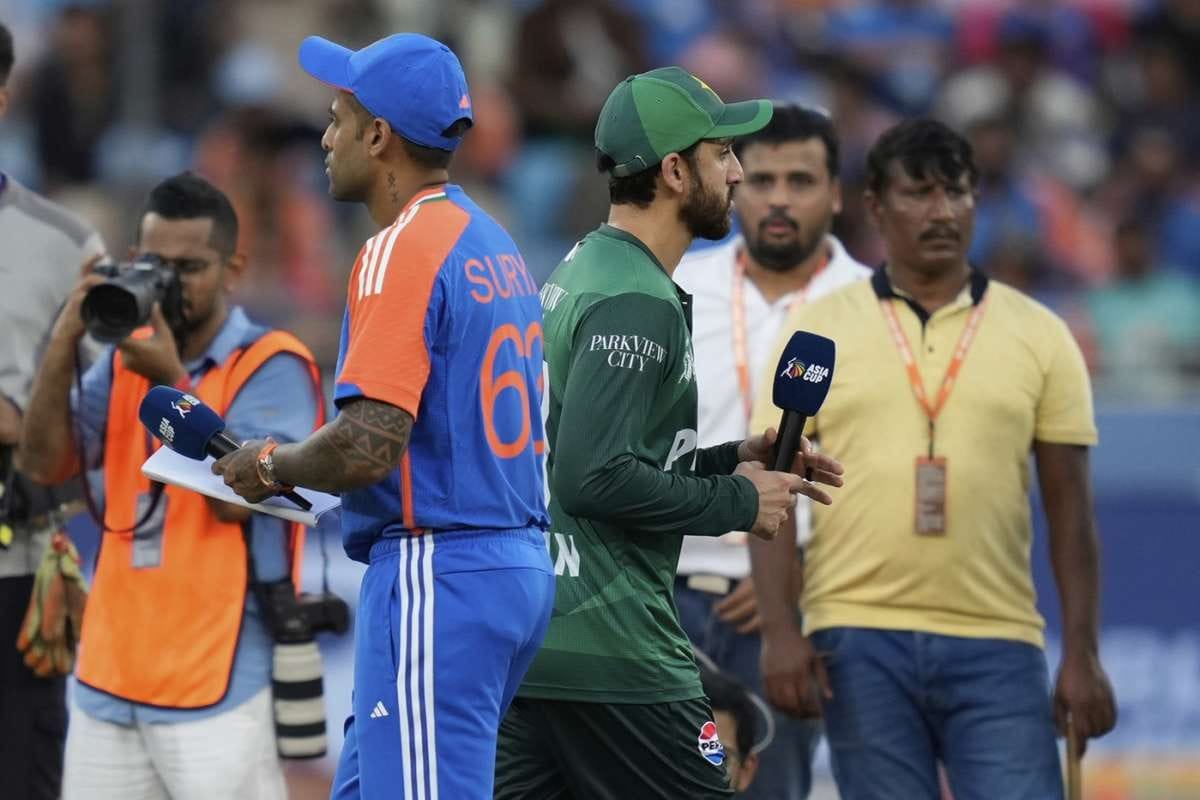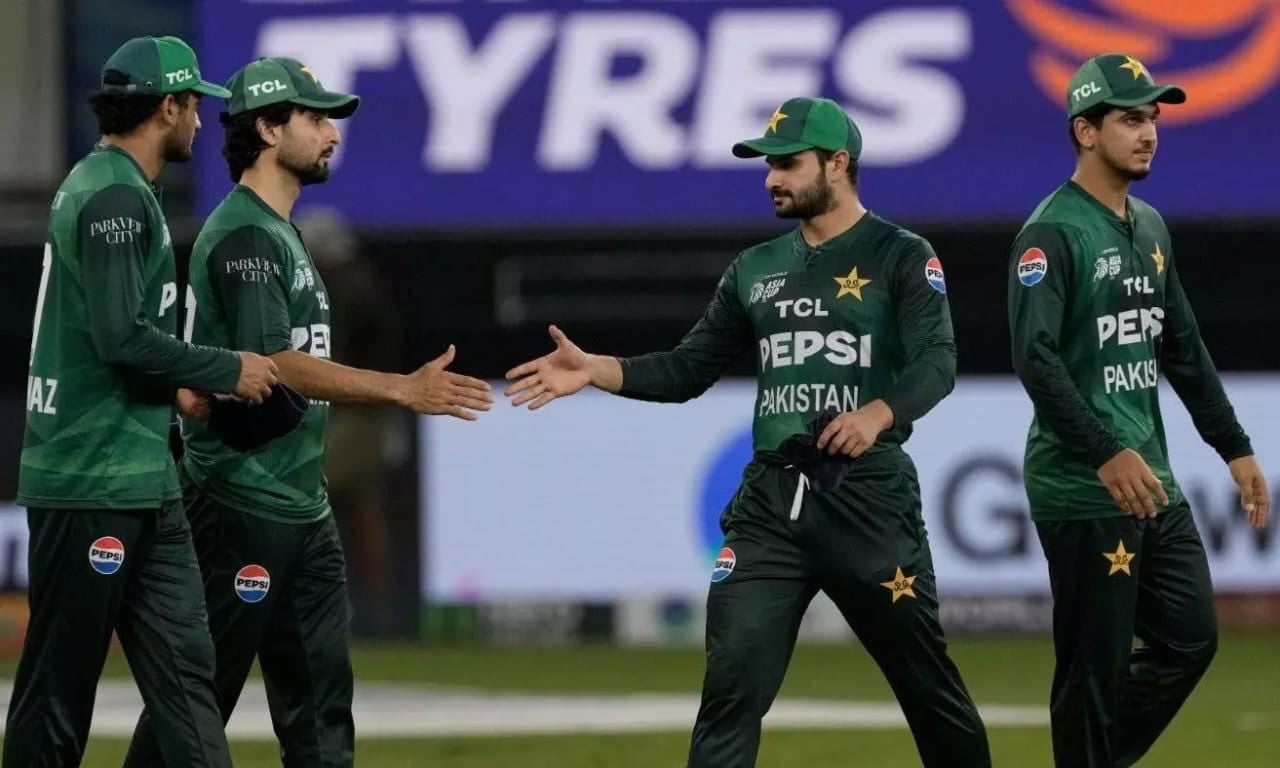When Pakistan and India are scheduled to meet, the whole cricketing world takes notice. It is not just another fixture but the game with the most heat, the most noise, and the most eyes watching. Tickets disappear within hours, the stands are packed well before the first ball, and the streets around the stadium turn into a carnival of traffic and anticipation.
What happens on the field is often tense. There are stares, sharp words, even flashes of temper. But there has always been one moment that cools everything down. At the toss the captains shake hands, and at the end of the match the players do the same. Win or lose, it has been the way to close the chapter, a small act that restores the spirit of cricket.
On September 14, 2025, in Dubai, that ritual broke. At the toss there was no handshake. After India’s seven-wicket win there was no gesture across the line either. The Indian players congratulated each other, walked off the field and shut the dressing room door. Salman Ali Agha and his teammates waited, expecting the familiar end to the contest. It never came. Agha skipped the presentation that followed, a quiet protest that made the absence of a handshake feel louder than the cheers that had carried through the night.

Just a day earlier, the mood was lighter. At the captains’ press conference both men were asked about aggression on the field. Suryakumar Yadav answered first. He said aggression had its place in cricket but it should remain controlled, that India wanted to play hard cricket but with respect. The microphone was then handed over to Agha. Looking across at his opposite number he replied that Pakistan also played with intensity, yet respect for the game and its opponents was always important.
The press conference ended with both captains rising to shake hands. Yadav even shook hands with PCB chairman Mohsin Naqvi, a moment that cameras caught and replayed across news channels. It looked routine at the time but within hours Indian media began to criticise their captain for it. That criticism would carry over to the ground the next day and the gestures that were once routine no longer looked the same.
By the time the teams lined up for the toss the atmosphere had shifted. The usual ritual where captains exchange a handshake before the coin goes up never came. Suryakumar called correctly, spoke briefly, and walked back to his side. Agha remained where he was, a handshake expected but not offered. The moment felt unusual but the game went on.
The stands were packed, the noise relentless, and on the field both sides played with intensity. There were stares and words, the kind of moments that always accompany an India–Pakistan contest, but nothing outside the normal script. India’s batting proved too strong and they won the match by seven wickets. That was when the second silence arrived.
Instead of meeting Pakistan’s players in the middle, the Indian team gathered in a huddle, shook hands among themselves and walked straight off. The dressing room door closed behind them. On the ground, Agha and his players waited for their opponents to come back out. It did not happen. Pakistan’s coach Mike Hesson later explained, “We were ready to shake hands, but when we looked around they had already left.” In quiet protest, Agha skipped the post-match presentation.
 The Pakistan Cricket Board (PCB) soon lodged a formal protest, calling India’s actions against the spirit of the game and demanding the matter be taken up by the match officials. What had begun as a missing handshake at the toss had now turned into a full-blown controversy that refused to end with the final ball.
The Pakistan Cricket Board (PCB) soon lodged a formal protest, calling India’s actions against the spirit of the game and demanding the matter be taken up by the match officials. What had begun as a missing handshake at the toss had now turned into a full-blown controversy that refused to end with the final ball.
And as the dust settled, attention shifted to the man in the middle of it all, match referee Andy Pycroft. For Pakistan, he became the face of the controversy. According to the PCB, it was Pycroft who told the captains before the toss that there would be no handshake. The board argued that by doing so he had stepped outside his role and helped politicise the contest.
Details soon emerged that complicated the story. Reports suggested Pycroft had been given only four minutes’ notice before the toss to pass on the message, a directive that had come through the Asian Cricket Council (ACC) after Board of Cricket Council India (BCCI) raised the issue. In that version, he was more of a messenger caught in the middle than the instigator.
Still, Pakistan pressed hard. They released a video of a meeting where Pycroft spoke with Agha and team officials. The clip was muted but the PCB claimed he had apologised. ICC sources pushed back, saying there had been no formal apology, only an explanation. What was meant to clear the air ended up adding to the confusion.
The row even delayed Pakistan’s next game against the UAE as officials debated whether they would take the field with Pycroft still in charge. The ICC rejected calls for his removal, standing by their referee, but the episode left questions about communication and authority hanging over the tournament.
 Voices from the game
Voices from the game
Shahid Afridi was quick to say that the fault did not lie with the Indian players themselves. In his view, they were simply following “orders from above,” a suggestion that the decision had come at the political level rather than the cricketing one. Shoaib Akhtar struck a different note, speaking with visible disappointment. He said he was speechless watching India refuse to shake hands and urged that politics be kept out of cricket.
Not all criticism was aimed at India. Former wicketkeeper Rashid Latif argued that the PCB had mishandled the situation by going after Pycroft. A handshake, he pointed out, is not mentioned anywhere in the ICC’s rules or playing conditions, making the board’s evidence shaky. From across the border, Kapil Dev took aim at the PCB itself, warning them to stop making “wrong statements” and focus on the cricket. Even former umpire Anil Chaudhary called the reaction “unnecessary drama.”
The split reactions showed how differently the episode was being read. For some it was a symbol of disrespect, for others a storm in a teacup. Yet the fact that so many big names felt compelled to comment only underlined how a small gesture had grown into a headline issue.
The storm around a simple handshake said more about South Asian cricket than about the players themselves. In most parts of the world, the end of a match is just that. The teams shake hands, clap off the field and the story fades with the scoreboard. In Pakistan and India, it is different. Every gesture carries weight, every action is read through the lens of politics and rivalry.
Cricket between the two countries has always been more than a sport. It has been used as a bridge in moments of peace and as a weapon in times of hostility. In 2004, when India toured Pakistan under Prime Minister Vajpayee’s banner of friendship, every handshake and hug was seen as a step towards dialogue. Two decades later, the absence of that same gesture is being read as a signal of hostility.
 What happened in Dubai was not about who won or lost. It was about the power of symbols. A handshake, or the refusal of one, became a headline, an argument on talk shows, and a diplomatic talking point. For the players it may have been a matter of instructions, but for the fans in the stands it felt like an extension of a deeper divide.
What happened in Dubai was not about who won or lost. It was about the power of symbols. A handshake, or the refusal of one, became a headline, an argument on talk shows, and a diplomatic talking point. For the players it may have been a matter of instructions, but for the fans in the stands it felt like an extension of a deeper divide.
In the end, what stayed with people was not the scorecard but the silence that followed it. Agha standing on the ground, waiting, while the Indian players disappeared behind a closed door. The crowd that had roared through every ball now watched in confusion as a routine gesture never came.
Cricket has always promised that once the match is over the field becomes neutral ground again. It is where rivals acknowledge one another, however fierce the contest. On that night in Dubai, the tradition was broken, and in its place a new chapter of controversy was written.
One side will argue that it was just a skipped handshake, the other will say it was a deliberate slight. But in South Asia, where cricket carries the weight of politics and national pride, small acts are never just small. On one side it may have been a simple walk back to the dressing room, on the other it became a symbol of the distance that still divides the game.
